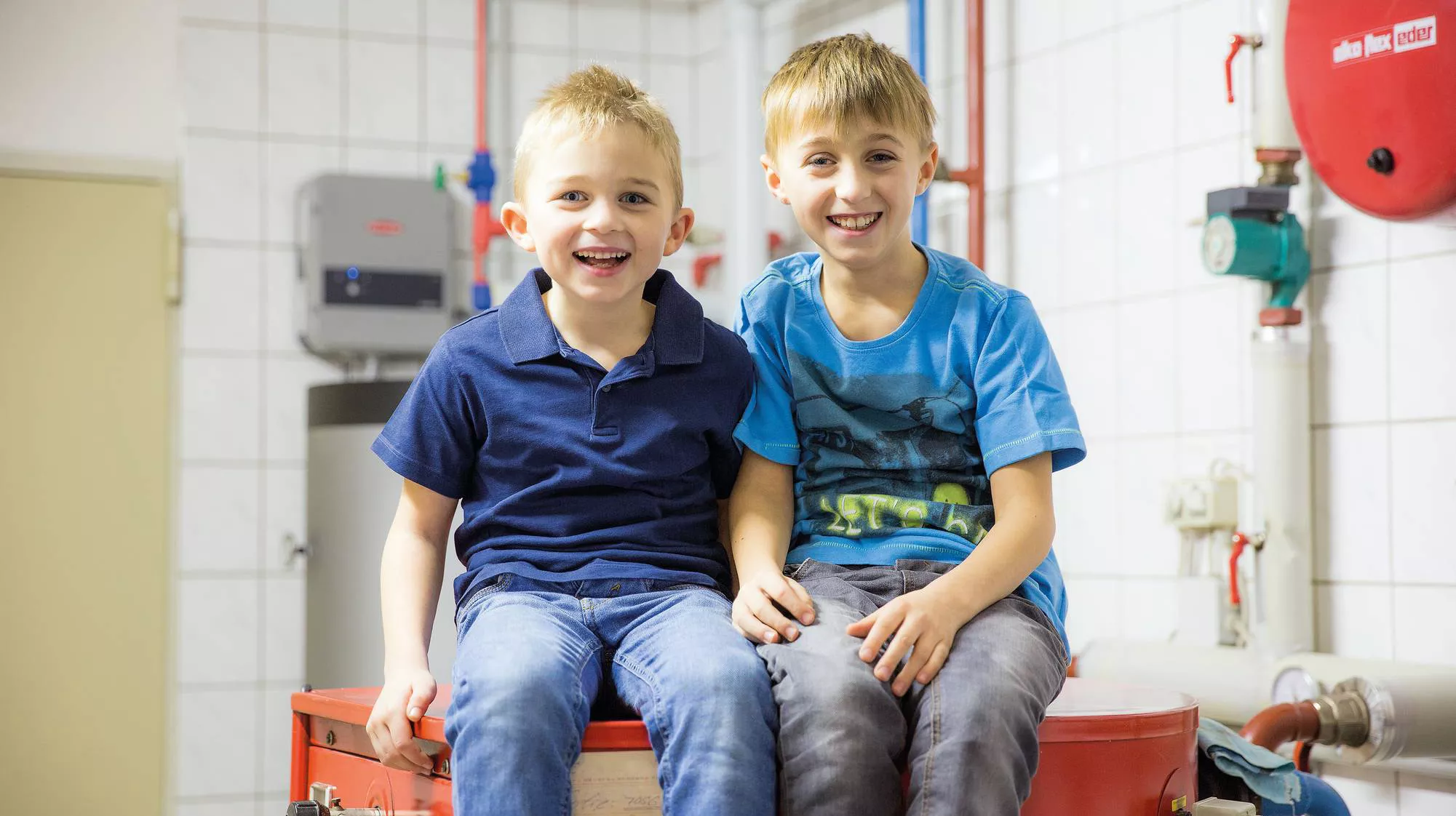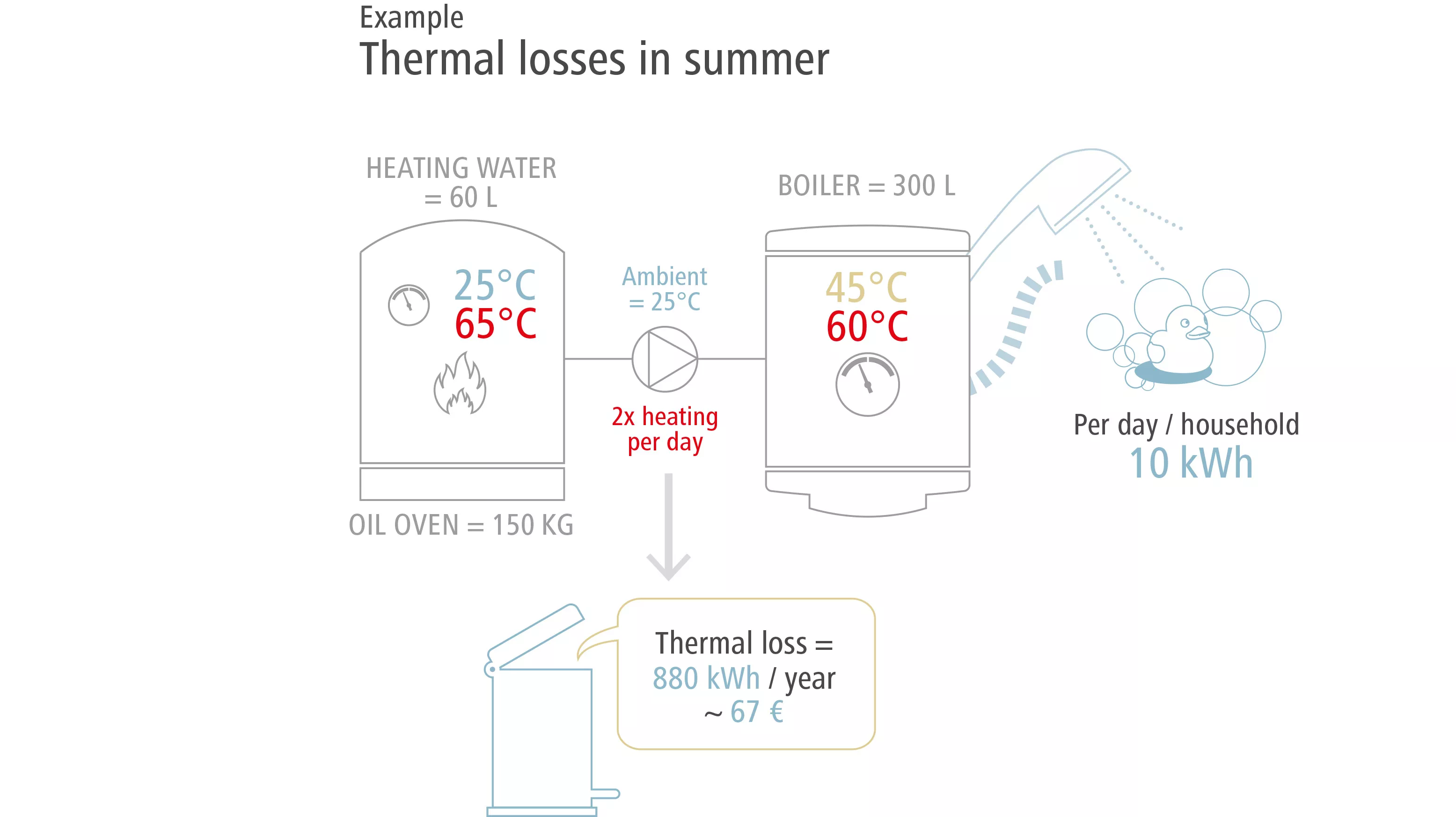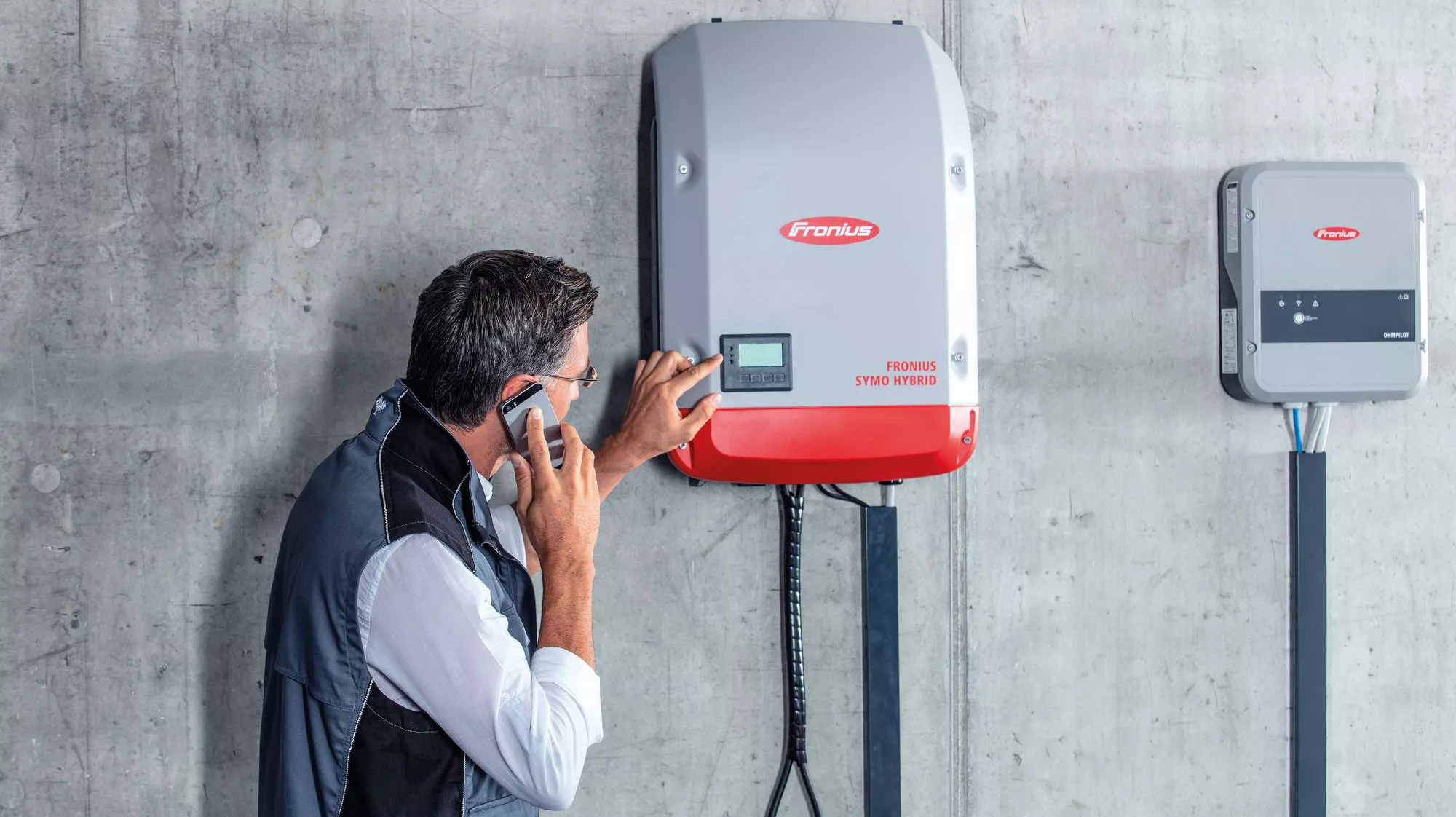The Fronius Ohmpilot, a heating hero - part 3

19. Using the Fronius Ohmpilot both increases self-sufficiency in terms of heating water and saves money
The Ohmpilot can be easily combined with existing heating systems, including gas, oil, wood chip and pellet heating systems, even heat pumps. Let’s imagine that your customer was previously using a pellet heating system to heat their hot water. By switching to a PV system with the Fronius Ohmpilot, the customer would save around 380 kg of pellets a year and heat 64% of the hot water they need using solar energy. When pellet costs are low, this equates to a saving of around 100 euros a year simply in fuel – and that is without taking into account the added benefit of extending the service life of the existing heating system.
20. The Fronius Ohmpilot with a heat pump – a perfect partnership
The Fronius Ohmpilot can instantly use even the smallest surplus power >0 watt, and has a clear advantage here over slower heat pumps. In addition, it can achieve higher temperatures and therefore store considerably more energy in the same boiler or buffer storage tank. The Ohmpilot can be used to control an SG-ready heat pump, combining the advantages of the Ohmpilot and a heat pump: - Smaller power surpluses can be used - Quick control - High target temperature in the boiler/buffer storage tank. In practice, this means that your customers will be better prepared for bad weather. Instead of only producing a day’s worth of hot water with a heat pump, the high temperature generated by the Ohmpilot means the hot water supply can last for three days. - High heat pump coefficient of performance
21. The Fronius Ohmpilot is far superior to a thermal installation
The Ohmpilot requires considerably less time and effort for installation as no pipework is required. The use of cables instead of pipes saves resources – both in terms of time and money. Thanks to the Ohmpilot, your customers can start heating water with the smallest of surpluses, whereas a thermal installation is completely ineffective when insolation is low. This is most noticeable in the transitional periods of spring and autumn. The low insolation during these periods means that thermal installations only produce very little – however, a PV system with an Ohmpilot located in central Europe heats the hot water using clean energy from April to October. Thermal installations are also significantly more susceptible to damage, including water damage in water-based systems. Unlike the Ohmpilot, a thermal installation is a hydraulic system and therefore requires cooling on hot days. Your customers can avoid all of these energy costs by using the Ohmpilot.
22. Continuously adjustable regulation on the Fronius Ohmpilot covers all your hot water needs, even on cloudy days
In the months of April to October, your customers will be able to switch off their existing heating system more or less entirely. Continuously adjustable regulation on the Ohmpilot means that nearly 100% of your customers’ hot water needs can be covered using PV energy, and not just on sunny days – even on slightly cloudy days it is still possible to heat 170 litres of water to 60 °C (5 KWp PV system, 5 kWh PV surplus). 170 litres of hot water would allow three people to shower for seven minutes each.
23. The Fronius Ohmpilot reduces maintenance costs for the heating system
By installing the Fronius Ohmpilot, the existing heating system is used to a much lesser extent, leading to fewer on/off cycles. Let’s take the example of a pellet heating system: in this instance we estimate that the system would have to switch on and off 180 less times per year.
This results in reduced energy throughput in the existing heating system, which will clearly have a positive impact on service life. We estimate that service life will be increased by at least 20%. As the heating system will go through fewer hot-cold cycles, material fatigue is reduced. This also leads to an increase in service life.

24. Using the Fronius Ohmpilot avoids the heat losses associated with using oil, pellet or wood stoves in the summer
As using the Ohmpilot between April and October means that the primary heating source can be completely deactivated, the household is not heated unnecessarily by the waste heat generated by the stove and its pipes.
Before an oil, pellet or wood chip stove supplies heat to a buffer storage tank or boiler, it heats the integrated water jacket, usually to a temperature of 65 °C. The hot water cools back down to room temperature without being used and is therefore of no benefit to your customers. Heating the water jacket also heats the surrounding air, warming the room unnecessarily, particularly in the summer.
Size of
the water jacket:
Oil
stove: approx. 60l
Pellet
stove: approx. 100l
Wood
chips: approx. 250l
Example:
Oil stove
with 60l water jacket
300l
boiler,
consuming
10kW/day of hot water means that the stove needs to be brought up to
temperature twice a day. Thermal losses resulting from hot water production
alone in summer = 880kWh/year, ~ €67!
25. You can even use the Fronius Ohmpilot with other systems, like combined heat and power
A combined heat and power station is probably not the most common setup, but it is nevertheless possible to use the Ohmpilot in this situation. This is achieved in the same way as using the Ohmpilot with a third-party inverter. If not already in place, install the Datamanager Box – it immediately takes over the Fronius Smart Meter connection and control of the Ohmpilot.
Klick here to read the first two parts:

